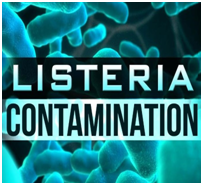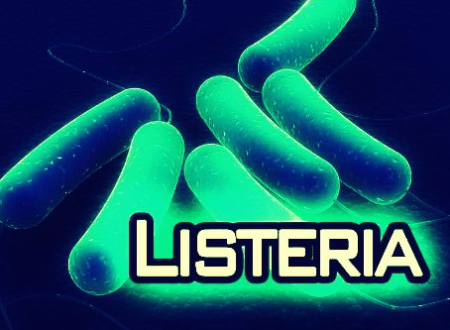South Africa Has the World’s Largest Listeria Outbreak According to WHO
The Cause Unknown after a Year
 South Africa is encountering the worst case of listeriosis ever reported, according to WHO (World Health Organization). Currently, there are 727 laboratory-confirmed cases with 67 death reported. The number of cases and the death toll increased significantly since last December when South Africa had 577 cases and 36 deaths.
South Africa is encountering the worst case of listeriosis ever reported, according to WHO (World Health Organization). Currently, there are 727 laboratory-confirmed cases with 67 death reported. The number of cases and the death toll increased significantly since last December when South Africa had 577 cases and 36 deaths.
South Africa Health Minister Aaron Motsoaledi said “When we view statistics of affected people, we note that of all the vulnerable groups, neonates [newborn babies within first 28 days of life] are the worst affected if we analyze it by age group from birth to 93 years. In this case, neonates alone account for close to 40 percent of the cases,” The minister continued: “Of note is that of all the neonates that get affected, 96 percent had an early-onset disease, that is, from birth to six days after birth. It is clear that these neonates are simply vulnerable due to their pregnant mothers. They are infected by their mothers at birth.”
According to WHO the most distressing element of this outbreak is that 40% of the dead are babies less than four weeks old, mostly infected from their mothers.
The infected people come from diverse socio-economic backgrounds, as determined by the use of both public and private hospitals.
The source of the infection is yet unknown. The long incubation period for the disease symptoms makes it difficult to identify the food source. “Even if a food source is identified, we can expect to have cases reported for several weeks to come,” said Lindmeier (WHO media Officer). “This is making the investigation into the source of the outbreak particularly complex.”
Listeria Stains
In a press release South Africa Ministry of Health reported that from 1st of January 2017 to 3rd of January 2018, 337 isolates from the outbreak had been sequenced. Of them 73% were clinical isolates, 22% were food isolates, and 5% were environmental isolates.
The minister Motsoaledi said that “…out of the total of 727 laboratory confirmed cases which we know about, we are only able to trace 134 actual patients, which is only 18%. This means that we still have a long way to go in searching. Out of the 134 traced patients, 61 had passed on,”

He further said that 91% of the isolates were the ST6 type and are very closely related to each other, representing a single strain of Listeria monocytogenes. The ST6 isolates were found in samples from all the 9 South Africa providences. This supports the hypothesis that there is a single source of the food contamination. It implies that it is a widely consumed food produced at a single facility. “Most likely a food product on the market or a series of food products produced in the same manufacturing environment,” says Dr. Lucia Anelich‚ a prominent South African food microbiologist and food safety expert.
The mortality rate of listeriosis is very high (20-30%) when compared to other food pathogens such as Salmonella and E. coli, with a mortality rate of 1-2%.
The isolated Listeria strain was not drug-resistant. Therefore, the deaths due to this outbreak were due to delays in diagnosis and treatment.
Potential Source of the Outbreak
Listeriosis most often results from foods such as unpasteurized (raw) milk and dairy products; soft cheese made with unpasteurized milk‚ such as feta‚ brie and camembert; refrigerated smoked seafood, ready-to-eat meats, raw vegetables, and pre-packed salads.

However, in this case, the minister of Health Motsoaledi said that a piece of chicken obtained from a patient’s home contained Listeria monocytogenes. The source of this chicken was traced back to the store and then to Soverein Foods slaughterhouse.
Whole Genome Sequencing was performed on the strains of Listeriamonocytogenes isolated from the Soverein Foods environment and food samples. None of the isolates was the outbreak strain of ST6. Regardless, some of the obtained strains had the potential of causing the disease.
As a result of the data obtained from the slaughterhouse cannot be conclusively identified as the source of the outbreak. Regardless, the Department of Health closed the poultry slaughterhouse. The company was delisted from the Johannesburg stock exchange in November. Yet, since in the latest inspection found no Listeria, the plant was allowed to be reopened. According to Reuters Sovereign Foods head of production, Blaine van Rensburg, said: “Despite being declared clean and free of the Listeria bacterium, we are further strengthening steps to render products safer than they already are,”
Action Taken by Health Department
Since December 5, 2017, the Department of Health amended the list of notifiable diseases to include Listeriosis, requiring clinics to notify the government of any case of listeriosis.
The food industry was requested by the Director-General of the National Department of Health to formally submit details of Listeria -positive food items, environmental swabs and Listeria isolates to the authorities.
It is very troublesome that after a whole year the outbreak is still continuing without any resolution forthcoming.
